TFB Review: SIG P211 - 5,000 Rounds Later

I have been shooting 2011s for a long time. Over the years, I have tried almost every variant of the platform from OG STI 2011s to newer modified variants like the Platypus, OA 2311 and newer Staccato HDs. One of the long-time weaknesses of the 2011 platform has been magazines. Not only are mags expensive, but due to the fact that the 2011 platform grip modules were originally designed for 45 ACP, the tubes tend to be larger than necessary, expanding the size of the grip along with it. Additionally, 2011 mags tend to have problems when dust and other foreign pieces of debris get into the tube, more so than other platforms. In recent years, we have seen a massive increase in “2011’s” on the market that keep the excellent ergonomics and trigger of the platform while using other, typically cheaper and more reliable magazines. The P211 is SIG Sauer’s attempt to break into this market. It honestly surprises me that it took this long for SIG to introduce a 2011 to the market.
SIG Sauer has made 1911s for quite some time and the pro shooters on their team, such as former SIG pro shooter Max Michel, have run 2011s professionally in competition for years. On paper, the P211 seems like a dream come true. Cheap P320 magazines with limited 320 holster compatibility alongside an inset comped barrel. On top of all this, it has a solid metal grip module, something typically only seen on higher-end 2011s and a pricey upgrade for most mid-range ones. With a price point coming in cheaper than most bone stock 2011s at $2399.99 street price, I knew I had to get my hands on one and run it hard to see if it lived up to the hype.
SIG P211: What’s Included
Fresh out of the box, the P211 comes with 3 magazines: two 21-round and one 23-round, all of which fit the mag gauge. Additionally, the P211 ships with 2 recoil springs. The pre-installed spring is heavier, while the second competition spring leads to a lighter recoil impulse, but in my experience, tends to run a tad anemic on slide return.
There are a few different package options for the P211. My particular P211 came with the Romeo Pro X enclosed, but you can order the P211 with a bare slide if you want to save some money. Optic compatibility, unlike some of SIG’s older designs, is not an issue due to the new SIG Loc footprint. This footprint natively supports not only SIG’s proprietary optics in order to sit them super low to the slide, but also DeltaPoint Pro and RMR footprint optics. I tested the optics footprint with all three throughout the review and found no issues with any of them. The P211 ships with recoil bosses to install for DPP optics, as well as to ensure reliable zero retention.
Fit and Feel
One of the first things I went to check was the fit and finish of the gun. The price point the gun sits at, I did not expect it to be hand fit like some of my higher-end 2011s. Right away, I was surprised by how tightly the gun fit together. While they clearly were not hand-blending features like you would get on higher-end pistols, it was about as tight as a Staccato P in terms of frame to slide fit. Additionally, the safety and beavertail were surprisingly well fit with easy activation and a surprisingly nice lockup. Finish is the typical SIG nitron finish and has held up very well throughout the review, despite me trying my best to wear it.
Trigger pull came in at right at 3.5 lbs on my trigger gauge. With the P211 being a modified series 80 style 2011, I fully expected a very mediocre trigger, but I was happily surprised. While it is slightly grittier and longer than something like my Fowler Vanta 9 or the Staccato XC, it is still better than almost any striker trigger on the market. The pull is crisp and consistent and the reset is short and tactile. I let a variety of people run the P211 in a variety of scenarios, from Bill Drills to mock USPSA stages, and the common consensus was that when actually running the gun, the difference in trigger pull was minimal, with it only really becoming noticeable as you stretch the pistol out past 25 yards.
SIG has been very proud of the Mach 3D compensator in all of their marketing and it's somewhat revolutionary. Where most 2011s use a chunk style comp like the XC or the Nighthawk Sandhawk or ports like my Vanta, this is a 3D-printed Inconel comp with three distinctive ports. It has an upward port like a traditional comp, however, it also has an additional funnel downward that directs gas down and then out to the sides of the comp.
I was a bit skeptical of the effectiveness of the comp compared to current market offerings, but I was pleasantly surprised. In footage, not only does it properly direct the gas out the sides as well as the top, but the compensator does an extremely effective job at mitigating vertical muzzle rise. The Mach 3D compensator also does not use a threaded barrel. Instead, SIG has chosen a similar attachment system to the Radian Ramjet, allowing for easy removal for cleaning, all while making it legal in states that prohibit threaded barrels. SIG has also stated that for those who wish to run this pistol in divisions like Limited Optics, they will eventually be selling a non-ported version of the Mach 3D, which will attach and function like a sight block. Over the course of the review, I had no issues with the cross screw or the comp coming loose.
One of the most obvious comparisons was to the venerable Staccato XC. For a long time, the XC has been a good value at $4299, as insane as that sounds. While expensive, the XC has always held up when compared to guns that cost much more, like the Nighthawk and Atlas guns. However, in recent times, pistols from other companies like the Girsan Match X have come out and, while not offering quite the performance of the XC, offer an insane value proposition. Side by side, the Staccato XC and the P211 are nearly imperceptible from each other recoil-wise. With the stiffer spring, the P211 is slightly snappier, however, with the lighter spring, the difference is negligible. Running drills with the P211, I noted that follow-up shots, even at distance, were extremely easy with the gun coming back onto target naturally and easily.
Now, much like any other astute firearms enthusiast, I at first thought this was all too good to be true and knew they had to be cutting costs somewhere. I tore down the P211 after the first range session side by side with a Staccato XC to compare some of the inner workings to see if I could find anywhere they cut costs to meet the insane price point they manage to sit at. Some of the notable differences between the P211 and the XC include some minor changes, like the lack of a toolless guide rod. The P211 uses a more traditional reverse plug and solid guide rod assembly. Normally, I am not a fan of these as they tend to be more of a pain to take down, but with the P211, it has not been an issue so far. Another interesting engineering choice made to presumably save cost was how they designed the barrel. While traditional 1911/2011 barrels have a tapering locking lug, which requires more hand fitting and more machine time, the P211 has lugs machined 360 degrees around the barrel, making them easier to machine while not sacrificing any reliability or lockup. Surprisingly, fit and finish are fairly solid. Barrel and slide to frame fit are excellent, with the trigger blade being the only real part of note that was “loose.” This, however, did not affect the function of the firearm and did not give me any problems over the course of the review.
Ergonomically, the P211 is excellent, with it being not only fully ambidextrous but also having superb safety placement and replaceable grip panels. Throughout the review, I found myself loving the controls both in placement and size. The enlarged magazine release did not require me to break my grip when reloading, unlike some other 2011 platforms. Additionally, the large magwell is bevelled nicely and is angled perfectly for speedy reloads on the fly. The ambi slide stop is extended slightly and comes off the slide just enough to make slide lock reloads effortless while remaining out of the way during normal use. During one of the shoots, I took the P211 to a friend who shot the gun with gloves on with no issues. He had no issues running any of the controls or controlling the firearm. The slide serrations are incredibly aggressive and wrap around the top of the slide, making manipulations a breeze regardless of temperature or slickness.
Another stark difference compared to a lot of the normal 2011s on the market is the addition of replaceable grip panels, like a 1911. The stock grip texture on the P211 is excellent, with not only the G10 grip panels but also the checkering on the front and back of the grip being the perfect amount of aggressiveness while not tearing my hands apart. Cleaning the G10 is also a simple matter of removing the grips and scrubbing them with Simple Green and a toothbrush, which makes them look as good as new, removing the dead skin and chalk easily. I had the P211 out in the summer heat as well as the rainy forest of the Pacific Northwest and never found an issue where the stock grip texture felt slippery. However, I foresee a huge aftermarket popping up for these pistols as competition shooters look to add brass grips to weigh the pistol down even more or to replace them with even more aggressive grips.
SIG P211 Accuracy
Accuracy-wise, the P211 does well at 25 yards off a bag. I was able to get the pistol to group a nice 1.5-inch group with Wilson Combat match ammo. With ball ammunition, I also noted no issues with accuracy during the review. After the break-in process, the gun cycled everything I put through it, from Blazer 115gr, Federal 147gr truncated cone and the 200 rounds of SIG V Crown 124gr that SIG sent with the firearm. During the initial break-in process of 200 rounds, I found the gun had issues cycling some of the lighter 115-grain ammo with the heavier spring, however, this was alleviated by swapping to the lighter one and after the gun loosened up, it ran everything with either spring with no malfunctions. After the first range session, I only had a handful of problems, with most being due to people riding the slide with their thumbs, which is an issue easily fixed with a slightly altered hand placement. I ran the gun with OEM 21-round mags as well as Magpul AMAGs and Promags and had no issues with any of them. As a 2011 shooter, this is a Godsend, as you can find AMAGs as cheap as $30 apiece and Promags even cheaper sometimes, as low as $14 a pop. This allows you to build up a solid collection of mags, which is extremely important for any gun you plan to use in a serious capacity, whether that be competition or in a LE application.
Conclusion
Overall, I have loved my time with the P211 and I think you would be hard-pressed to find a better starting point if you are new to the 2011 game and want something fully tricked out. The P211 is already a phenomenal shooter and when you pair that with the cheap mags, plentiful holster availability and a feature set hard to find on guns that cost twice as much, it really starts to shine. I have multiple friends who picked them up as well, who are high-ranking competition shooters and pretty much everyone who has gotten their hands on one agrees the value is outstanding. Given SIG’s previous lineups, I fully expect to see compact as well as factory non-compensated models soon. Additionally, I foresee a large aftermarket of grip panels and potentially 3rd party compensators or sight blocks. SIG has seemingly knocked it out of the park with the P211; it manages to check almost every box I had hoped for in a modern interpretation of a 2011 and represents a phenomenal choice for the newcomer to the platform.
We are committed to finding, researching, and recommending the best products. We earn commissions from purchases you make using the retail links in our product reviews. Learn more about how this works.

Avid hunter, Speed steel enthusiast, Deep sea fisherman, Resident Roof Korean
More by Lucas D
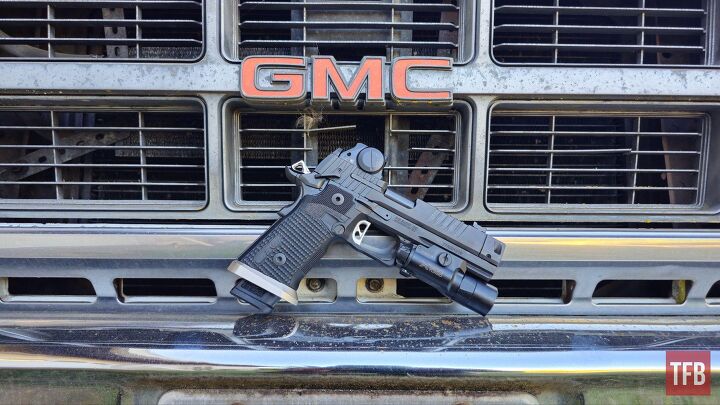
















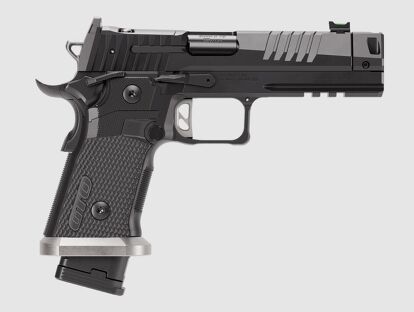


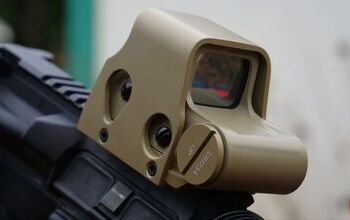

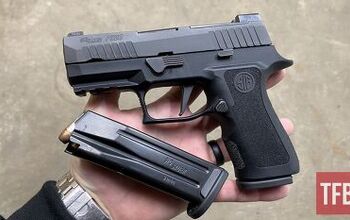
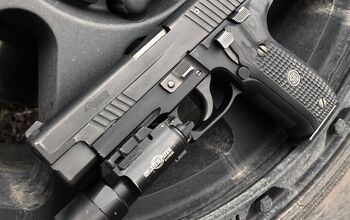
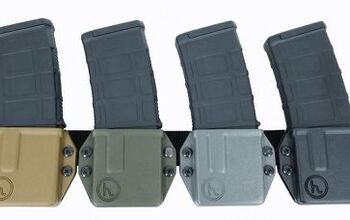








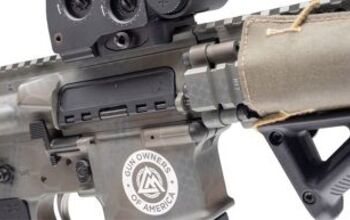


Comments
Join the conversation
Literally nothing will convince me to ever give Sig my money again.
This statement, "high-ranking competition shooters." Pretty clear. To Dave keep up with news. Murderer suicided and 2 Airmen who failed to report/told a BS story were punished. All services still using Sigs no problem.